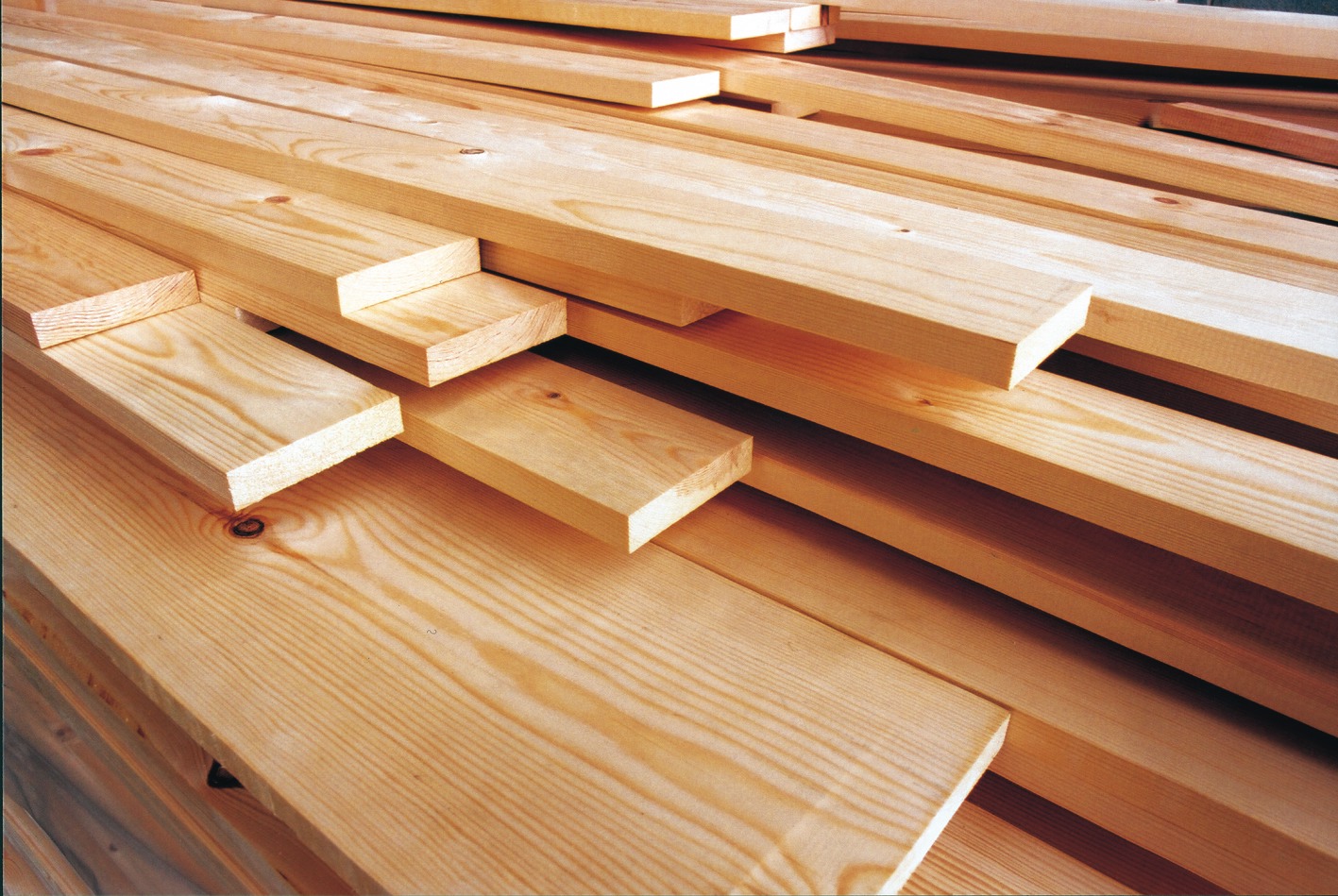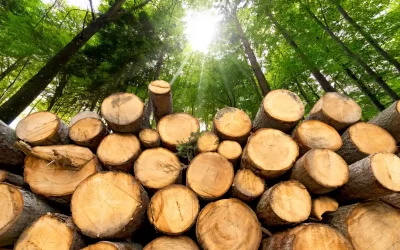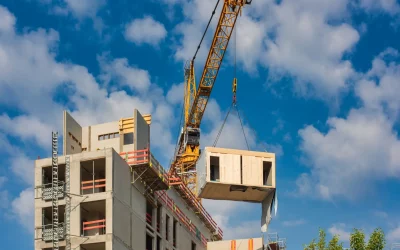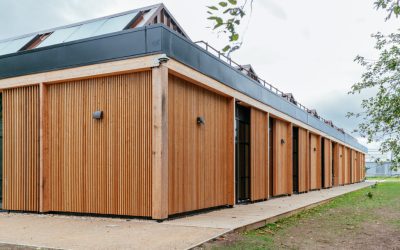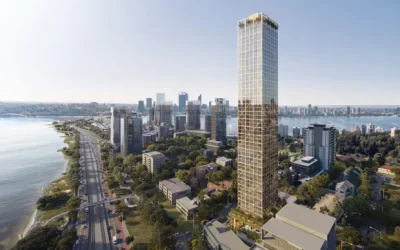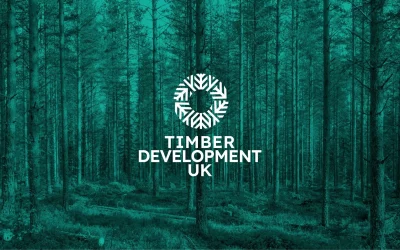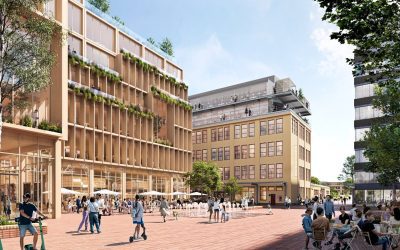Written by Wood Campus
Environmental | Industry | News
The UK’s three largest housebuilders (Barratt Developments, Taylor Wimpey, and Persimmon) have announced plans to open dedicated factories for timber-based construction materials.
Klober is a roofing accessories provider looking to convince construction companies to consider new ways of improving air and moisture tightness while preventing condensation.
This comes in light of predicted growth for the UK’s timber market as companies accelerate efforts to reach net zero emissions.
The timber market has grown rapidly due to the environmental benefits of timber-based construction methods, such as its ability to absorb carbon emitted in the production process.
The majority of new buildings in the UK are timber-based
According to a recent study, 92% of newly built properties in Scotland are timber-based, and the rest of the UK is predicted to go in a similar direction.
“Efficient buildings are the future. From a bill payers’ perspective, you don’t want to be paying to heat your property for it to go straight out of the walls or roof. And from an environmental standpoint, preventing air leakage is a key priority. Therefore, construction professionals must carefully consider how they deliver homes that are efficient,” explained Nick King, portfolio manager at Klober.
To create more energy-efficient building stock, properties need to be thermally efficient. Timber-based building materials achieve this through the detailing of the wood’s internal membrane. Supporting accessories can help reduce air leakage and create airtight seals around openings in the building.
Why good ventilation is essential
However, an airtight timber building needs to be balanced with ventilation. If a structure is not properly ventilated it could lead to a build-up of internal condensation in the roof space and wall cavities. This can be detrimental to occupant’s health if they are exposed to the condensation long term.
British Standard BS 5250: ‘Code of practice for control of condensation in buildings’ details all the rules and regulations for avoiding problems of high moisture levels and condensation.
“Maintaining a balance between air and moisture tightness and the right ventilation is essential. From a building fabric perspective, this can be achieved by opting for a vapour-permeable membrane that allows the wall structure to breathe while keeping it windtight and draught-free,” concluded King.
Original Article:pbctoday
More News
Timber in construction roadmap UK policy
The Government has committed to growing and maintaining a sustainable and long-term supply of domestic timber and wood products in the 2023 Environmental Improvement Plan. We have awarded £7.6 million through the Woodlands into Management Forestry Innovation Funds to...
Government commits to more timber construction
The Government has set out an ambitious plan to raise the use of timber in the construction of homes and buildings. It has published a roadmap to boost the safe use of sustainable UK timber in construction while planting forests to increase domestic timber supply. By...
8 Billion Trees
Wood Campus is always keen to promote content and resources which we know will be of interest to our regular visitors and this is why we are drawing your attention to the 8 Billion Trees mission.8 Billion Trees is dedicated to reducing carbon emissions using tree...
TDUK market forecasts at London conference
UK and international timber traders gathered in strong numbers for Timber Development UK’s Global Market Conference in London on Wednesday at a time of difficult market dynamics. A noticeably downbeat market sentiment was palpable at the event held in Carpenters Hall,...
Learning Through Timber
The new ‘living lab’ at NMITE will act as a home for Centre of Advanced Timber Technology students to learn more about timber and a net zero approach to building materials.A new purpose built 2,500sqm ‘living lab’ for the New Model Institute for Technology and...
World’s tallest wooden building to be built in Perth after developers win approval
Artist’s impression. Photograph: Elenberg FraserDevelopers say South Perth’s C6 building will be made up of 42% timber and be carbon negative Western Australia is set to become home to the world’s tallest timber building, a “revolutionary” 50-storey hybrid design...
ARUP – Seven perspectives on the use of timber in building design and construction
ARUP are a global collective of designers, consultants and experts dedicated to sustainable development. We use technology, imagination and rigour to shape a better world. For over 75 years, Arup has been recognised for its vision, talent and tenacity. Dedicated to...
Timber Development UK and Structural Timber Association sign MOU
Timber Development UK (TDUK) and Structural Timber Association (STA) have signed a Memorandum of Understanding (MOU) to help grow and develop the timber construction market. Under the terms of the agreement the two parties have agreed to form a partnership in order to...
Worlds largest wooden city Stockholm
Scandinavian studios Henning Larsen and White Arkitekter are designing Stockholm Wood City, which will become the world's largest mass-timber development and have the "serenity of a forest". Set to be built in the Stockholm neighbourhood of Sickla, the project was...
Data & the Three Pillars of Sustainable Forestry
According to Rolf Schmitz, co-founder and co-CEO of CollectiveCrunch and the creator of Linda Forest software solutions, digitising the world’s forests is essential to understanding and fighting climate change. If a tree falls in the forest, it hardly matters if it...

